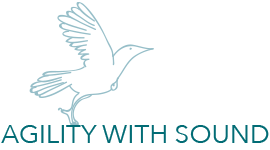AwS Digital: Scope and Sequence.
Stage 1.
Begin with how to write simple and compound sentences, up to p. 30 of The Sentence Book
Then
Introduce books and writing from level 2 and 3.
- These introduce the basic structure of an introduction, two or three body paragraphs, and a conclusion.
- Students learn that a paragraph is about one idea and begins with a lead sentence.
The lead/ topic sentences and the conclusion are provided, modelling these components.
Every paragraph has a list of suggested vocabulary.
Continue activities in The Sentence Book, up to p. 54, to prepare students for the writing assignments in the next stage.
Stage 2
Books and writing from level 4 and 5 are introduced. These further develop the structure of a body paragraph.
- The lead/ topic sentence.
- Supporting detail. Expand on the lead sentence, giving reasons, supporting facts, and examples. Transition words are introduced.
- Concluding sentence.
Suggested lead sentences are provided, but students must write their own conclusion. Students are introduced to varying sentence structure within a paragraph. They learn to avoid repeating words within a paragraph wherever possible, supported by synonyms in the vocabulary list.
Every paragraph has a list of suggested vocabulary.
Work through The Sentence Book to the end to prepare students for the third stage.
Stage 3.
- Books and writing from levels 6, 7 and 8.
These introduce more sophisticated body paragraph structure.
- The lead/ topic sentence – students to write.
- Using transition words to create flow within the paragraph.
- Using supporting detail and pertinent examples, as above.
- Analysis – how does this detail support your core argument?
- Concluding sentence, often introducing the theme of the following paragraph.
- Attention to coherence and cohesion, within sentences, between sentences, and between paragraphs, is further developed in this stage.
Every paragraph has a list of suggested vocabulary.
At all levels, students are exposed to a variety of genres. Most writing embraces several: writing a persuasive piece, for example, requires summarising the arguments, and some comparing and contrasting.
Sample assignments:
Varied purposes for writing: compare and contrast, persuasive writing, letter writing and much more. All assignments are based on tasks students should see as potentially relevant to their adult lives.
You are a sports reporter writing about this event. Or a sports coach, writing the guidelines.
You are a scientist; explain your discovery. Or advise the authorities.
You are the manager of this wildlife park. Write a pamphlet. Or explain the job requirements to applicants.
You are a DJ. Tell your audience about the history of this band.
You are the lawyer. Convince the judge in a written statement.
You are a salesman. Convince this company to invest in your product.
You, Joey in Year 8, have been asked to advise NASA how they could overcome the problem they have with rocket boosters.
You need to write a letter of complaint, a submission to government, to apply for funding, or write a Facebook post …
No matter the purpose, the structure is the same. It is all directly applicable to NCEA.

